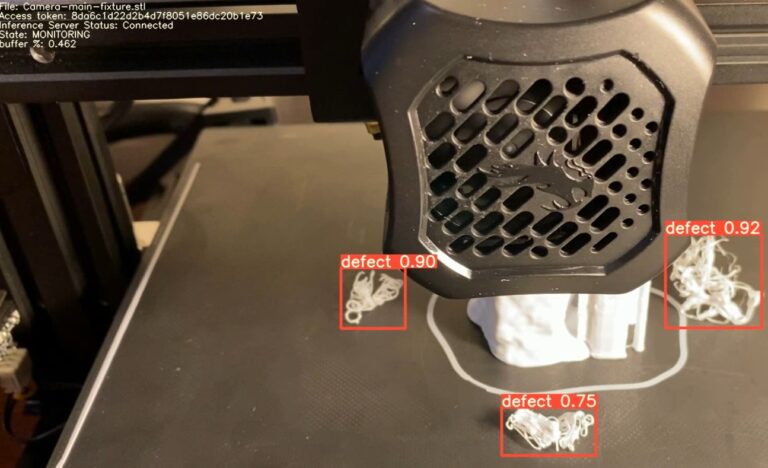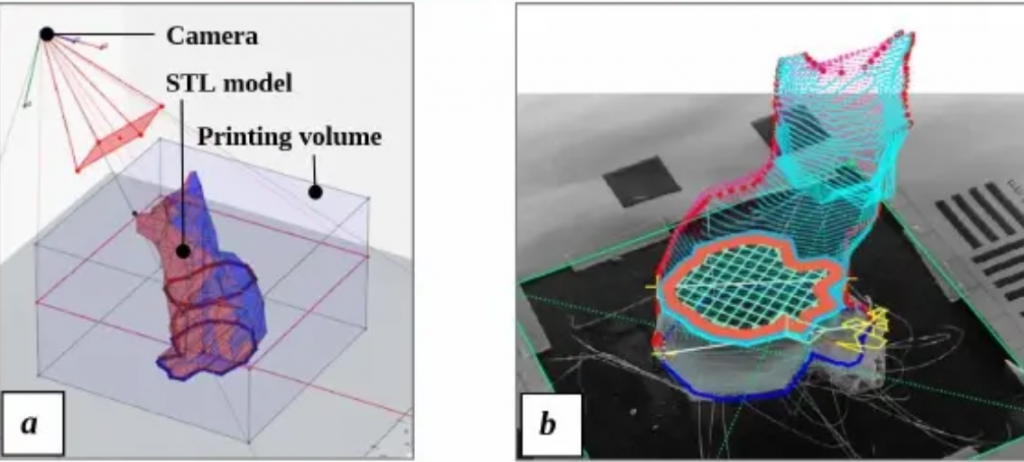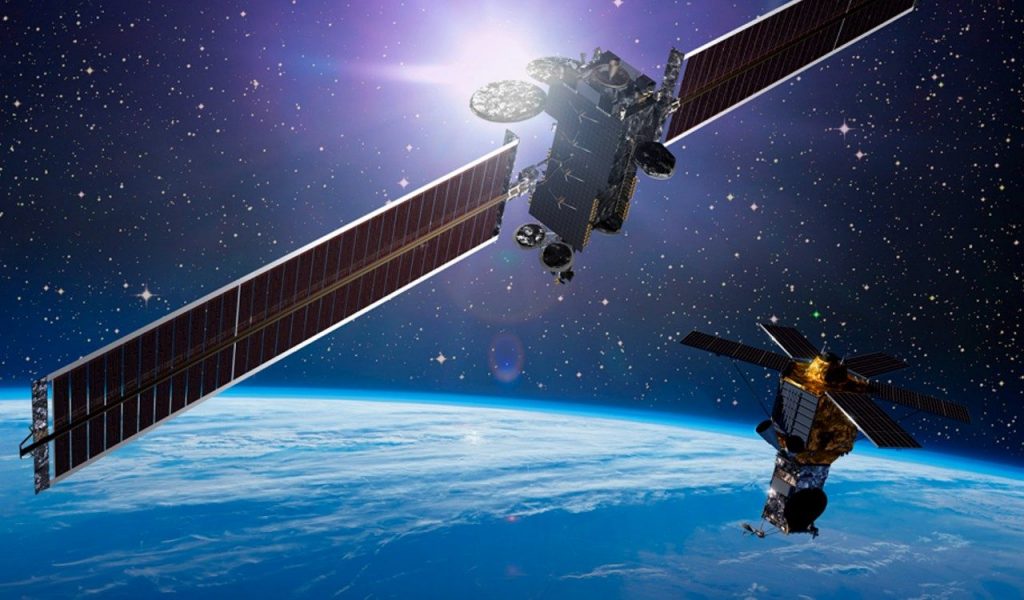Kicking things off with real-time defect detection, this article is the first in a series delving into Artificial Intelligence (AI) and 3D printing, as the technology continues to be field-tested in ever more demanding applications to improve the quality of parts, automate the manufacturing process and even operate machines autonomously.
In 3D Printing Industry’s recent Future of 3D printing: experts on the frontier technology to watch survey, AI and Machine Learning (ML) were mentioned by a quarter of all those interviewed, making them the single most talked about technologies. Some respondents lauded them as ‘defining the frontier,’ while others saw them as a basis for “self-directing robots,” but elsewhere, firms like Printpal are using them in the here and now.
“We have an anomaly detection system that runs in the background, and this system can ‘sense’ when something very slight has changed with the printer or if there is an anomaly,” says Printpal’s CEO Peter Lebiedzinski.
“It is the equivalent of having an intern staring at the print constantly for the entire duration of the print without actually having to pay them $15 per hour,” he added. “This has very obvious benefits: saving time and material, and gives the user peace of mind by preventing damage or fire.”
Of course, anyone that’s ever returned to find build failure will know the frustration that comes with this, but it’s not just print faults that restrict 3D printing’s wider industrial adoption, it’s part consistency too. According to a recent study by manufacturing service provider Jabil, 37% of users see quality shortfalls as an issue that prevents scalability, while 39% blame technological limitations.
In order to help users improve their part consistency and overcome frustrating failures, a number of firms like Printpal, as well as other researchers and institutes are now working on algorithms capable of alerting users to errors in real-time. To find out how these AI-driven software packages work, and where they could be applied in future, 3D Printing Industry has spoken to experts across the sector.

AI in unlocking 3D printing at scale
When it comes to manufacturing at an industrial-scale via technologies like Laser Powder Bed Fusion (LPBF), it’s vital to understand how every step in the process affects the quality of parts produced. In particular, the porosity of metal components can be an issue.
To get a firm grasp on what causes such porosity, Argonne National Research Lab’s Noah Paulson and his team have come up with a method of using ML to predict defects. In effect, the team has managed to use thermal imaging to identify the temperature history of different printed parts, before feeding this data into ML algorithms capable of forecasting the chances of sub-surface porosity in future builds.
“In-situ ML porosity prediction can predict the probability of defect formation during the printing of each component,” says Paulson. “This provides an indication of when it’s likely to be compromised and should therefore be reserved for further destructive or non-destructive evaluation. As these techniques are more time-consuming and expensive, their use could be minimized with the aid of ML.”
“Once trained, ML can predict the probability of sub-surface porosity for a new time-temperature history measurement.”
Elsewhere, at another of the USA’s leading research institutes, Oak Ridge National Lab (ORNL), scientists are also developing a digital framework for the certification and qualification of printed parts. It’s in pursuit of this goal that the team has created ‘Peregrine,’ an algorithm designed to automatically detect anomalies in the texture features of each object layer, via digital imaging.
Thanks to its robust neural network architecture, it’s said that the software is able to reliably detect and identify the causes of multiple different classes of defects. Specifically, Peregrine finds out how certain morphological texture features correspond to anomalies, before using this data to create a model which can be deployed to inform future prints.
“By repeating the process over the entire height of the printed volume, it’s possible to create a 3D model of the component that can then be compared to the original design to produce a 3D map of all the pores,” explains Vincent Paquit, ORNL’s group leader for energy systems analytics. “Traditionally, this assessment is done using X-Ray CT imaging, a process requiring completing the manufacturing process.”
“Peregrine’s in-situ data analysis provides the same feedback, but in real-time, therefore allowing users to stop the process in case of the early detection of a catastrophic failure,” he added. “Although in-situ monitoring should not be seen as a replacement for X-Ray CT imaging, it does provide a complementary solution for statistical sampling.”

Realizing AI’s 3D printing potential
While AI 3D printing algorithms generally remain at a relatively early stage of development, researchers have started to experiment with early applications for them. Late last year, for instance, a joint team from Penn State University and the US Air Force Research Lab (AFRL) utilized ML to generate a unique model that identifies defects during builds, and deployed it to 3D print antenna parts.
“Our approach is a variation of in-line simulation, however ML surrogate prediction is very fast,” says Dr. Philip Buskohl, AFRL’s Research Mechanical Engineer on the project. “This requires paying the simulation costs upfront to create the training set, but opens the door for real-time prediction and subsequent defect repair.”
Two years ago, Western University’s Aliaksei Petsiuk also began working with known 3D printing innovator Joshua Pearce to develop an open-source error-detection algorithm. Speaking to 3D Printing Industry, Pearce has now revealed that he continues to develop the technology with colleagues, as he says products like Spaghetti Detective tend to uncover big failures, but “miss more subtle issues.”
“Most recently, we have been getting stellar results by making synthetic images with Blender,” says Pearce. “We detect 3D printing anomalies by comparing images of printed layers from a stationary camera, with G-code-based reference images of an ideal process. This open-source method allows the program to notice critical errors in the early stages of their occurrence, and pause manufacturing.”
Identifying an AI-driven loophole?
However, while Buskohl and Pearce’s projects reflect the potential of AI technologies in advancing open-source 3D printing and defense manufacturing, research being carried out at NYU Tandon has uncovered some of its potential pitfalls.
Leveraging machine learning, engineers at the university have reported the reverse engineering of glass and carbon fiber 3D printed components. Though the team behind the project initially came up with their software to design complex parts and estimate their properties, they found that by ‘reversing the information flow,’ it’s possible to reconstruct a replica without the consent of designers.
According to Nikhil Gupta, an NYU Tandon Professor and one of the team behind the paper, this doesn’t necessarily mean that reverse engineering is currently happening, but he hopes its findings at least “alert the design community” to the possibility.
“It does not appear that ML methods are currently used for reverse engineering because both the additive manufacturing of composite materials and use of ML for composite materials design are in nascent stages,” explains Gupta. “However, maturation of these technologies over time will increase the risk of reverse engineering.”

AI’s future in real-time monitoring
Whether it be investigating the benefits or drawbacks of deploying AI in 3D printing, it’s clear that a significant amount of research is being poured into exploring its full potential. Although many of these algorithm-driven approaches being developed are still years from end-usage, the likes of Sigma Labs have already managed to bring theirs to market.
At present, the firm’s revenue remains relatively low, but it continues to foster close ties with government contractors. In fact, Sigma Lab’s PrintRite3D real-time monitoring software was even selected by Lockheed Martin to support its space division in March last year. Yet, while the platform is currently made up of hardware and software modules, Sigma Labs has now unveiled plans to launch a software-only offering, predicting that it could be adopted by as many as 10% of metal 3D printer users.
So, what does this mean for AI in the 3D printing industry? According to Lebiedzinski, recent advances in the technology suggest that software packages such as PrintRite3D and his firm’s PrintWatch, will unlock greater automation in the sector. This, Printpal’s CEO says, could prove particularly beneficial for 3D printing service bureaus, in that it allows them to carry out preemptive maintenance that minimizes machine downtime, and prioritize orders based on delivering optimal part shipping.
“The end-goal of AI software is to run continuously without any human interaction,” concludes Lebiedzinski. “The software will automatically select print jobs, print them, sweep them off the bed into a reservoir and repeat the process. Machine Learning will be key to making this system work correctly and efficiently.”
To stay up to date with the latest 3D printing news, don’t forget to subscribe to the 3D Printing Industry newsletter or follow us on Twitter or liking our page on Facebook.
For a deeper dive into additive manufacturing, you can now subscribe to our Youtube channel, featuring discussion, debriefs, and shots of 3D printing in-action.
Are you looking for a job in the additive manufacturing industry? Visit 3D Printing Jobs for a selection of roles in the industry.
Featured image shows a diagram depicting what the AI model of Printpal’s PrintWatch software sees. Image via Printpal.



